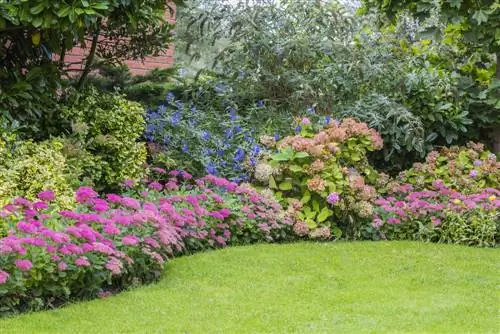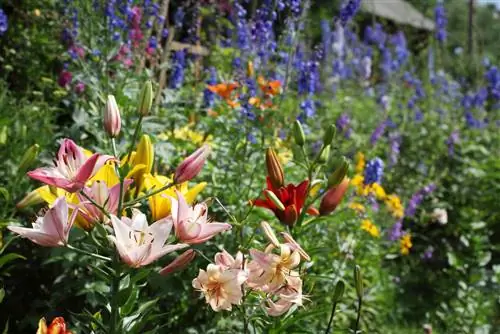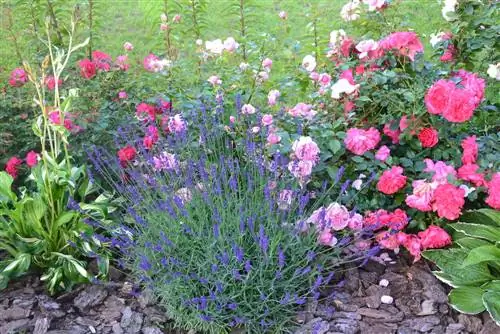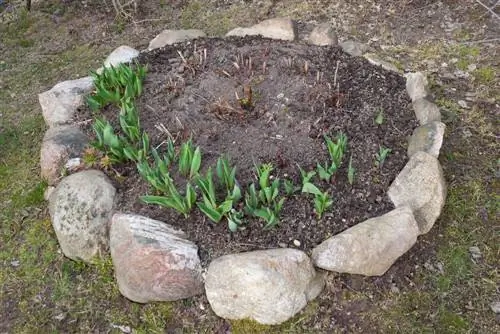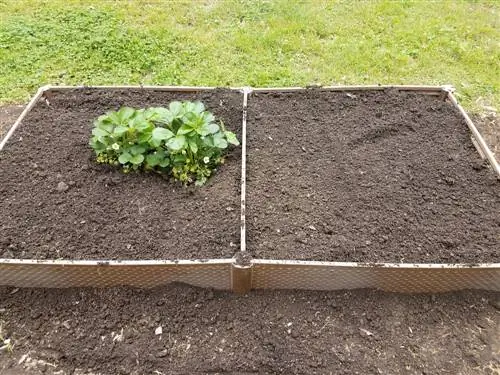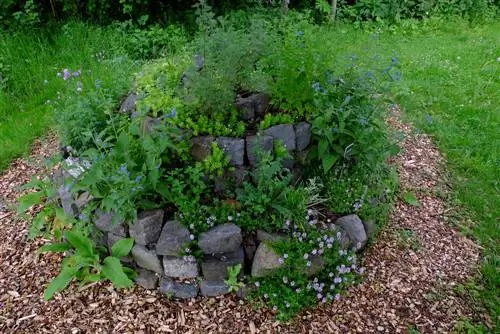- Author admin [email protected].
- Public 2023-12-16 16:46.
- Last modified 2025-01-23 11:21.
A flower bed brings color and variety to the garden, the flowering perennials and bushes put a smile on the gardener's face and - provided suitable nectar plants are selected - serve as a source of food for many insects. Creating such a perennial bed is not complicated, it just requires a little planning.
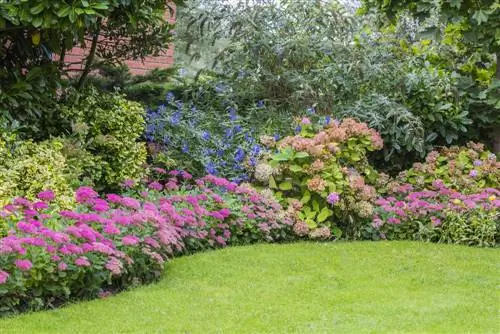
How do I create a new flower bed?
To create a new flower bed, first create a planting plan, prepare the bed in autumn, improve the soil if necessary and mark the planting areas. Then lay out the perennials, plant them and cover the bed with mulch or leaves as winter protection.
Planting plan
The very first step is to create a planting plan in which the location, shape and size of the flower bed as well as the appropriate plants are determined. When planning, you should either decide on a theme (such as a specific color or a specific flowering period) or put together a colorful mixed perennial bed in which plants of different growth forms and sizes, flower colors and flowering times are combined. In larger beds, other groups of plants such as onion flowers, shrubs or ornamental grasses are added.
Preparing the bed
The perfect time to create the flower bed is early autumn, when the ground is still warm from the sun and the first frosty nights are still a few weeks away. Dig the planting area thoroughly, remove weeds, roots and stones, break up the topsoil and then rake the bed well and smooth.
Soil improvement
It may be necessary to improve the soil by improving loamy soils with plenty of sand and compost and sandy soils with topsoil and compost. Compost in particular in combination with horn shavings (€32.00 at Amazon) is a valuable product and at the same time serves to supply perennials and other plants with nutrients.
Mark planting areas and lay out perennials
Now mark the intended planting sites, which can be done with sand. You don't need to remove this later, just dig it in when planting. If you are satisfied with the overall look, lay out the perennials that are still potted. The planting plan can then be corrected if necessary, but you must always keep the following in mind when making any changes: The perennials will grow and some will become very large - the large plants that now look so small always belong in the background of the bed, those that remain smaller move forward.
Planting perennials
Now dig the planting holes, which should be about twice the size of the plant's root ball. Do not plant the perennials deeper than they were previously in the pot, press them firmly and water them vigorously. You can then cover the flower bed with bark mulch and, if available, with leaves. This not only retains moisture in the soil and serves as a natural fertilizer, but also protects the plants from the coming winter cold. If necessary, covering with brushwood - preferably spruce or fir - can also be useful later as winter protection.
Tip
If you choose perennial, perhaps even long-lived species, you don't have to recreate the flower bed every year.

